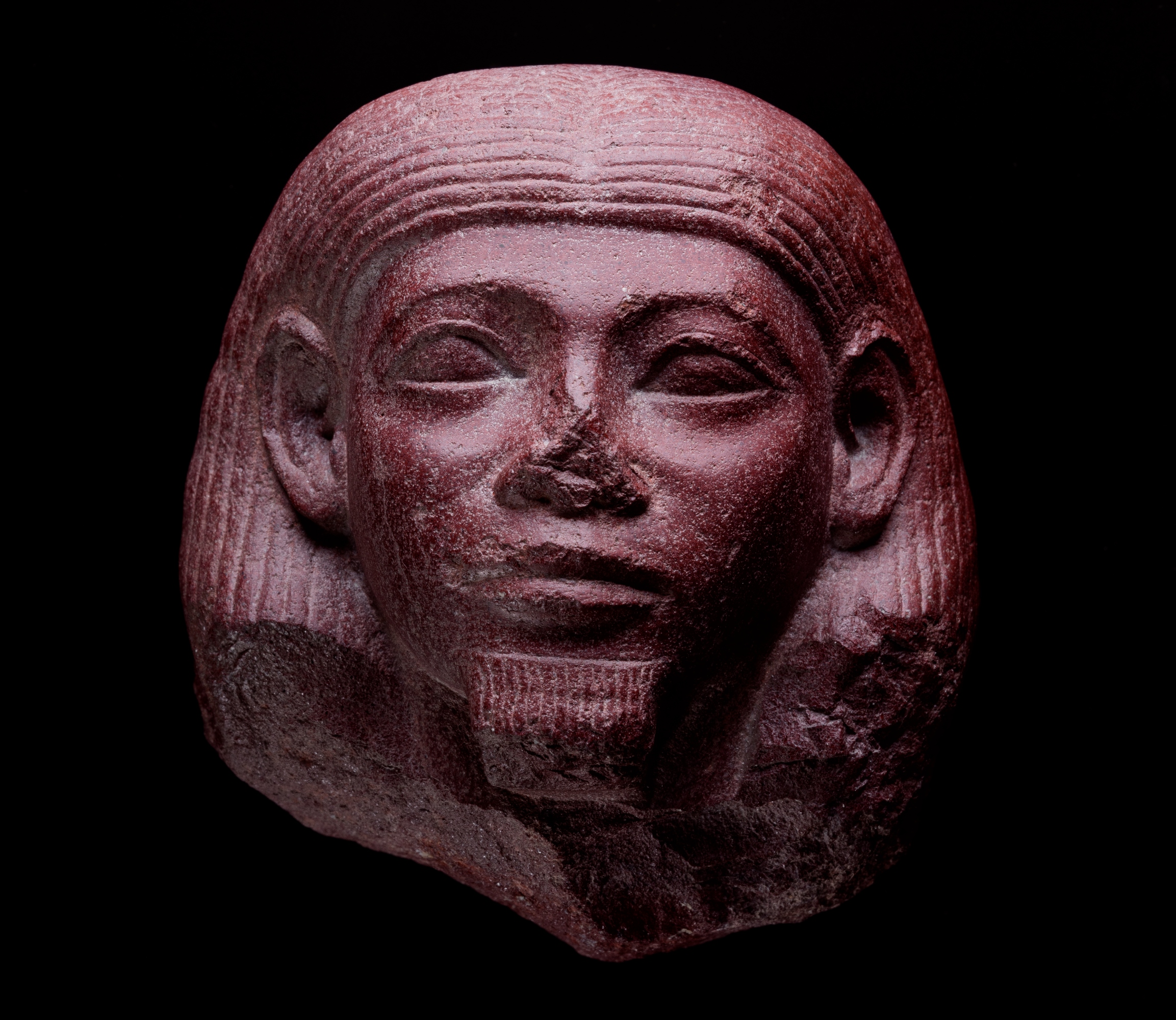
A Scottish schoolboy didn’t expect to make history in 1952 when he was handed down the punishment of digging up potatoes on school grounds. To his astonishment, his spade uncovered not another spud but a large, red sandstone head. Before long, experts had identified the hidden statue as an Egyptian antiquity dating back to the 12th dynasty.
The precious object was handed over to the National Museum of Scotland and is now on permanent display in the Ancient Egypt Rediscovered gallery. That an object made some 4,000 years ago in northern Africa would be dug up in Scotland was bizarre, but the shock discovery was assumed to be a one-off.
That is, until 1966, when another pupil at the private Dalhousie Castle School housed in Melville House in Fife, Scotland, happened upon a bronze votive statuette of an Apis bull. He made the discovery while vaulting during a sports class and experiencing a bumpy landing thanks to something hard sticking out of the ground. Perhaps most strangely of all, his supervising teacher Mr McNie was the same boy who had found the sandstone head 14 years earlier. The object was shown to museum officials who dated it to the Ptolemaic Period, but Mr McNie walked off with it and it has never been recovered.
The chance discovery of not one but two precious Egyptian antiquities at the same site in Scotland may sound more than a bit unlikely, but it wasn’t until a third treasure was found that museum officials decided to investigate further. That piece, a bronze figurine, was unearthed two decades later, in 1984, by a boy playing with a metal detector on the grounds of what was then a residential school for young offenders.
Volunteers from NMS and Balfarg working on the grounds of Melville House in 1984. Photo: © National Museums Scotland.
It was reported to Elizabeth Goring, a curator at the Scottish museum, and dated to the 25th dynasty. When she learned from colleagues that there had been two similar finds at Melville House, she organized a search mission. A whopping 15 more objects were unearthed, including a plaque with the Eye of Horus and a figuring of the Egyptian goddess Iris suckling her son Horus.
“Excavating and researching these finds at Melville House has been the most unusual project in my archaeological career,” said Goring, who will share her story for the first time in the peer-reviewed journal Proceedings of the Society of Antiquaries of Scotland. “Uncovering ancient Egyptian objects in Fife is clearly unexpected, and the subsequent research to establish the origins of the collection has provided a fascinating tale, albeit one with further mysteries which may never be solved.”
An owner of the pieces has never be identified. It has been speculated that the remarkable collection may have belonged one of Melville House’s former inhabitants, Lord Alexander Balgonie. He visited Egypt at the age of 24 in 1856, a time when it was common for dealers in Egypt to sell antiquities to tourists. The following year he died from tuberculosis, which may explain how the precious objects came to be neglected and eventually left to the elements. An alternative explanation is that they were buried due to fearful superstitions after rumors spread about a curse of the pharaohs.
“The discovery of Egyptian artifacts that had been buried in Scotland for over a hundred years is evidence of the scale of 19th century antiquities collecting and its complex history,” commented Margaret Maitland, a curator of the Ancient Mediterranean at the National Museums Scotland.
More Trending Stories:
Conservators Find a ‘Monstrous Figure’ Hidden in an 18th-Century Joshua Reynolds Painting
A First-Class Dinner Menu Salvaged From the Titanic Makes Waves at Auction
The Louvre Seeks Donations to Stop an American Museum From Acquiring a French Masterpiece
Meet the Woman Behind ‘Weird Medieval Guys,’ the Internet Hit Mining Odd Art From the Middle Ages
A Golden Rothko Shines at Christie’s as Passion for Abstract Expressionism Endures
Agnes Martin Is the Quiet Star of the New York Sales. Here’s Why $18.7 Million Is Still a Bargain
Mega Collector Joseph Lau Shoots Down Rumors That His Wife Lost Him Billions in Bad Investments